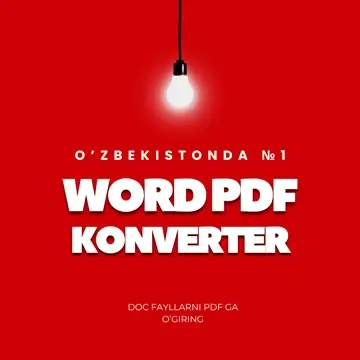
Joylangan
11 May 2024 | 07:37:02
Bo'lim
Kimyo
Fayl formati
zip → doc
Fayl hajmi
28.64 KB
Ko'rishlar soni
183 marta
Ko'chirishlar soni
10 marta
Virus yo'q.
VirusTotalda tekshirilgan
O'zgartirgan san'a:
29.03.2025 | 23:38
Arxiv ichida: doc
Joylangan
11 May 2024 [ 07:37 ]
Bo'lim
Kimyo
Fayl formati
zip → doc
Fayl hajmi
28.64 KB
Ko'rishlar soni
183 marta
Ko'chirishlar soni
10 marta
Virus yo'q.
VirusTotalda tekshirilgan
O'zgartirish kiritilgan:
29.03.2025 [ 23:38 ]
Arxiv ichida: doc



